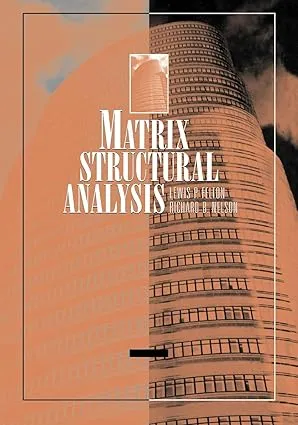OpenSees Cloud
OpenSees AMI
Textbooks and Hand Grenades (on Substack)
Show your support at Buy Me a Coffee.
Close counts for structural analysis textbooks too.

Image generated by AI.
I have taught matrix methods of structural analysis more or less annually since 2004. Although I provide typed up lecture notes that adequately cover the material, every year students ask if there is a textbook that goes deeper into the subject. Understandable—I expect graduate students to seek out additional sources of information.
However, my typical answer is “No, there’s not really one textbook that covers everything”. And I believe that should be the answer when you’re teaching a graduate course in your specialty area—unless you have already written a book on the course material.
In the matrix methods course, we use the “basic system” for frame, truss, and spring elements, form system-level equilibrium and compatibility equations, discuss constraint handling methods, and dive into reduced row echelon form for automatic selection of redundant forces and constrained nodal displacements, all while only briefly referring to “Hooke’s Law”.
How to reduce a matrix is largely an issue of linear algebra while constraint handling methods are a standard topic in finite element analysis. But you still need to show how these methods are applied to models comprised of frame, truss, and spring elements.
The basic system is essential for understanding the frame element formulations in OpenSees. If more people understood the basic system and how to define local axes, nonlinear analysis with OpenSees would be much less of a mystery. But that’s another story.
I understand why one would avoid system-level equilibrium and compatibility equations though. If you take the equations literally, you can end up with very inefficient implementations of structural analysis methods. But the system-level equations are still good tools for conveying concepts and analyzing small models by hand.
With this cursory overview, the book that comes closest to what I cover in matrix methods is Matrix Structural Analysis by Felton and Nelson.

Felton and Nelson, Matrix Structural Analysis, 1996.
The book uses the basic system for beam, truss, and spring elements and develops system-level equilibrium and compatibility equations. However, neither constraints, matrix reductions, nor implementation details are covered in the book, but that content can be filled in from elsewhere.
The major gripe I have with this book—a big enough gripe to have prevented adoption in my course—is that all examples and exercises are symbolic. While you can plug in any number, it’s still nice to see an example worked out with numbers from time to time.
The Felton and Nelson book is out of print and becoming more difficult to find and, if you find it, more expensive to acquire. Don’t hesitate to purchase a good used copy though. Or, if you are affiliated with a university, inquire about availability at the university library.